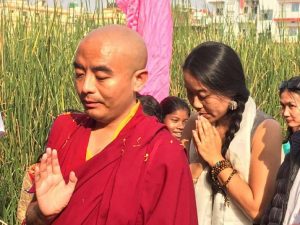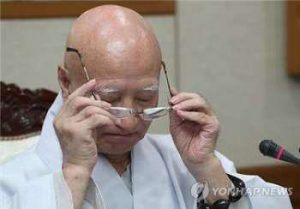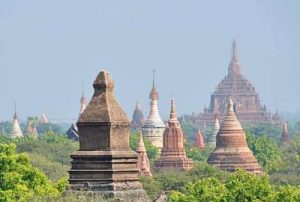
Abstract
Buddhism is the only world religion which does not recognize nor non-recognize the presence of any soul or self-entity. Whether a soul or a self-entity is present or absent was never answered by the Buddha. These questions are categorized as unanswered questions in Buddhism which the Buddha had insisted to be put aside (thapaniya) as they always lead to suffering and never address the issue of cessation of suffering. The Anatta teaching in Buddhism is not a doctrine of no-self, but a not-self strategy for shedding suffering by letting go of its cause that leads to the highest level of unlimited happiness. Without viewing anything as pertaining to “self” or “other”, we should recognize each phenomenon simply for what it is, as it is directly experienced and then perform the duty appropriate for it.
Introduction
A unique feature of Buddhist teachings is the emphasis on Anatta, which is often translated as no-self. Buddhism is the only world religion which does not recognize nor non-recognize the presence of any soul or self-entity. In fact, Buddhism holds a neutral position in this context. Many modern scholars misinterpret the teachings of the Buddha and believe that Buddhism does not believe in soul or self-entity. But the fact is that, whether a soul or a self-entity is present or absent was never answered by the Buddha. These questions are categorized as unanswered questions in Buddhism which the Buddha had insisted to be put aside (thapaniya) as they always lead to suffering and never address the issue of cessation of suffering. Thus, the Buddhist philosophy is similar to modern science where the scientists also hold a neutral position in this aspect as no one has ever discovered a soul or a self-entity till date.
The word “self” is a misnomer in Buddhism
Buddhism trains us not to identify ourselves with the soul or self-entity as these would lead to ego problems and discrimination in our minds. But it never regards or disregards the presence or absence of soul or self-entity.
This creates confusion in the minds of the religious practitioners belonging to other religious backgrounds. This concept does not fit well with the Judeo-Christian, Hindu, Muslim and Jain background which assumes the existence of an eternal soul or self as a basic presupposition. There is often an argument on the issue that if there is no-self then what is transmitted from one life to the other. If there is no soul or self-entity then what is the purpose of a spiritual life. Also, the idea of there being no-self does not fit well with other Buddhist teachings such as the doctrine of Karma and Rebirth. If there is no self then what experiences the results of Karma and takes rebirth is a debatable issue.
While understanding the background why the Buddha had observed silence to address this issue, we must remember that Buddhism never interfered with existing local socio-cultural practices and laws of the country. Wherever Buddhism had spread, it had recognized and incorporated the existing socio-cultural practices of the community and modified its own rules and regulations accordingly. This is an important reason why Buddhism has become a world religion without inflicting any harm or exerting any force on anyone. As the concepts of soul and self-entity were deep-rooted in Indian culture and society since ancient times and the fundamental block for existing Brahmanism, Buddhism did not want to go for an outright clash on this issue and disturb the peace and harmony of the society. Buddhism had assumed a neutral position and never supported or disregarded the ancient Indian beliefs of soul and self-entity.
The Concept of No-Self (Anatta) in Buddhism
If we explore the Pali Canon, the earliest extant record of the Buddha’s teachings, we find that the Buddha had never addressed the issues related to soul or self-entity. In fact, when the Buddha was asked whether or not there was a soul or self, he refused to answer. He urged that to hold either that there is a self or that there is no self is to fall into extreme forms of wrong view that make the path of Buddhist practice impossible (Samyutta Nikaya XLIV.10). Thus, the question should be put aside (thapaniya) as these types of questions do not lead to the end the suffering and stress.
There are some basic ground rules for interpreting the Buddha’s teachings. The Buddha said that there are two types of people who misrepresented him. The first category of people comprised of those who drew inferences from statements that should not have inferences drawn from them. The second category included those who did not draw inferences from those which needed. But if we look at the way most scholars had addressed the Anatta doctrine, we find these ground rules being ignored. Some of the scholars tried to qualify the no-self interpretation by saying that the Buddha denied the existence of an eternal self or a separate self. If we accept this view then this means to give an analytical answer to a question that the Buddha insisted to be put aside.
Some other scholars however, tried to draw inferences from the few statements in the discourse that implied that there is no-self. In this case, they forced those statements to give an answer to a question that should be put aside. Here, one was drawing inferences where it should not be drawn in the first place. These were attempts to refer the teachings of the Buddha out of context. We need to examine under what circumstances the Buddha gave his discourses. Quoting the Buddha out of context in order to win an argument is itself an example of our attachment of the minds to cling on to a dogmatic view.
Parable of the Poisoned Arrow
It is against this background that we need to understand why Buddhism has set aside (thapaniya) certain questions as undetermined (avyakata). Nothing illustrates this situation better than the parable of the poisoned arrow (sallupama). When the monk Malunkyaputta wanted to know from the Buddha the answers to these ten questions, the Buddha told him that these questions are “undetermined, set aside, and rejected” by the Blessed One. The answers to these questions were not relevant to understanding the fact of suffering and its elimination. It was as irrelevant as the need to know the name of the person who shot the arrow in order to remove it from the body. But here we should keep in mind that the parable of the poisoned arrow implied indirectly that questions regarding who shot the arrow could be answered, though they were irrelevant for the purpose of a cure. So, the questions of soul and self-entity were not undetermined questions (avyakata), but they were irrelevant and should be put aside (thapaniya) in Buddhist perspective.
The Four Noble Truths
Instead of answering “yes” or no to the question of whether or not there is a soul or self-entity that is interconnected or separate, eternal or not, the Buddha considered these questions as irrelevant and inappropriate. This is because, no matter how we define self and other, the notion of self involves an element of self-identification and clinging and thus suffering and stress. The notion of “self” is thus an attachment that leads to ego and thus culminates in suffering.
If we identify ourselves with all of nature, then we feel pain by the death of every creature or plant on earth. If we do not identify with anything at all in nature, then it holds for an entirely other universe. In this case, the sense of alienation would become so debilitating as to make the quest for happiness, whether for one’s own or that of other, as impossible. Considering these reasons, the Buddha advised paying no attention to such questions as Do I exist? or Don’t I exist? for whatever manner we answer them; they lead to suffering and stress. We must remember that the prime goal of Buddhism is to end suffering for all sentient beings through the phenomenal and mental cultivations.
To avoid the suffering implicit in questions of self and other, the Buddha had offered an alternative way of dividing up experience. This is through his preaching of the Four Noble Truths that includes Dukkha our sufferings, cause of suffering, its cessation, and the path to cessation of suffering. Stress should be comprehended. Its cause should be abandoned. Its cessation should be realized and the path to its cessation should be developed. The main cause of our suffering is the attachment of our mind either to material forms or dogmatic views. We need to shed these clinging or attachments and keep our mind wide open all the time. Without viewing anything as pertaining to “self” or “other”, we should recognize each phenomenon simply for what it is, as it is directly experienced and then perform the duty appropriate for it.
Conclusion
Through the cultivation of mind if we are able to comprehend the inner meanings of the Four Noble Truths, then the common questions that earlier occurred in our minds as Is there a self? What is my self? would cease to occur. Instead, our mind would reframe these questions as Am I suffering stress because I’m holding onto this particular phenomenon? Is it really me, myself, or mine? If it is stressful, but not really me or mine, then why should I hold on? This would help us in comprehending suffering and help us to abandon our attachment and clinging with regard to the residual sense of self-identification. This would finally lead to the limitless freedom until ultimately all traces of self-identification are gone. In this context, we must remember that the Anatta teaching in Buddhism is not a doctrine of no-self, but a not-self strategy for shedding suffering by letting go of its cause that leads to the highest level of unlimited happiness. Once there is an experience of such total freedom, there would be no concern about who is experiencing it or whether there is any self or not.
References
Bhikkhu, T. 2009. Anatta: The Concept of No-self in Buddhism [serial online]. [cited 2009 October 26]; [4 screens]. The Wanderling. Available from: URL: http://www.angelfire.com/electronic/awakening101/noself.html
V, Jayaram. 2009. The Buddhist Concept of Anatta or No-self (Anatma) [serial online]. [cited 2009 October 31]; [2 screens]. Available from: URL: http://www.hinduwebsite.com/buddhism/anatta.asp
Karunadasa, Y. 2008. The Unanswered Questions: Why were they left unanswered? A New Interpretation based on a Re-examination of the Textual Data. Hong Kong: The Centre of Buddhist Studies, the University of Hong Kong.
Barua, A., Testerman, N., Basilio, M.A. 2009. Applied Buddhism the Foundation of Our True Understanding. Hong Kong: Buddhist Door, Tung Lin Kok Yuen & Unibook Publications.
Barua, D.K. 2005. Environment & Human Resources: Buddhist Approaches. Applied Buddhism: Studies in the Gospel of Buddha from Modern Perspectives. . Varanasi, India: Centre for Buddhist Studies, Department of Pali & Buddhist Studies, BenarasHinduUniversity: 90-6.











